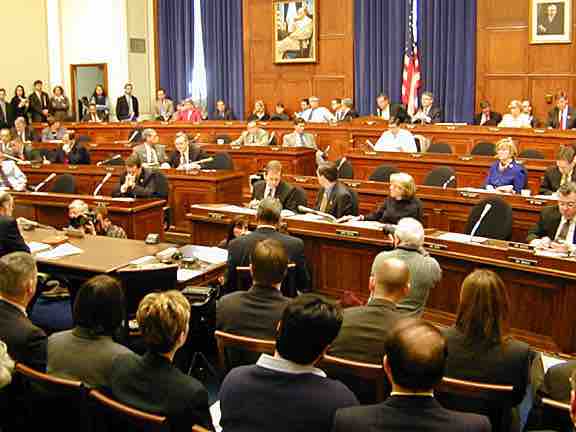Background
Representatives introduce a bill while the House is in session by placing it in the hopper on the Clerk's desk. It is assigned a number and referred to a committee. At this stage, the committee studies each bill intensely. Drafting statutes requires "great skill, knowledge, and experience" and can sometimes take a year or more. On occasion, lobbyists write legislation and submit it to a member for introduction. Joint resolutions are the normal way to propose a constitutional amendment or declare war. On the other hand, concurrent resolutions (passed by both houses) and simple resolutions (passed by only one house) do not have the force of law, but they express the opinion of Congress or regulate procedure. Any member of either house may introduce bills. However, the Constitution provides states that: All bills for raising Revenue shall originate in the House of Representatives. While the Senate cannot originate revenue and appropriation bills, it has the power to amend or reject them. Congress has sought ways to establish appropriate spending levels.
Bill and Resolutions
Each bill goes through several stages in each house including consideration by a committee and advice from the Government Accountability Office. Most legislation is taken into consideration by standing committees, which have jurisdiction over a particular subject such as Agriculture or Appropriations. The House has 20 standing committees; the Senate has 16. Standing committees meet at least once each month. Almost all standing committee meetings for transacting business must be open to the public unless the committee publicly votes to close the meeting. A committee might call for public hearings on important bills. A chair who belongs to the majority party and a ranking member of the minority party lead each committee. Witnesses and experts can present their case for or against a bill. Then, a bill may go to what is called a mark-up session where committee members debate the bill's merits. The committee members may offer amendments or revisions. Committees may also amend the bill, but the full house holds the power to accept or reject committee amendments. After debate, the committee votes whether it wishes to report the measure to the full house. If a bill is tabled, then it is rejected. If amendments are extensive, sometimes a new bill with amendments built in will be submitted as a so-called "clean bill" with a new number. Generally, members who have been in Congress longer have greater seniority and therefore greater power.

U.S. House Committee
The House Financial Services Committee meets. Committee members sit in the tiers of raised chairs, while individuals testifying and audience members sit below.
A bill, that reaches the floor of the full house, can be simple or complex. It begins with an enacting formula such as "Be it enacted by the Senate and House of Representatives of the United States of America in Congress assembled. " Consideration of a bill requires, itself, a rule which is a simple resolution specifying the particulars of debate—time limits, possibility of further amendments, and such. Each side has equal time and members can yield to other members who wish to speak. Sometimes opponents seek to recommit a bill, which means to change part of it. Generally, discussion requires a quorum, usually half of the total number of representatives, before discussion can begin, although there are exceptions. The house may debate and amend the bill. The precise procedure used by the House and Senate differs. A final vote on the bill follows.
Once a bill is approved by one house, it is sent to the other which may pass, reject, or amend it. For the bill to become law, both houses must agree to identical versions of the bill. If the second house amends the bill, then the differences between the two versions must be reconciled in a conference committee. This is an ad hoc committee that includes both senators and representatives and uses a reconciliation process to limit budget bills. Both Houses use a budget enforcement mechanism informally known as "pay-as-you-go" or "pay-go" which discourages members from considering acts which increase budget deficits. If both houses agree to the version reported by the conference committee, the bill passes, otherwise it fails.
The Constitution, however, requires a recorded vote if demanded by one-fifth of the members present. If the voice vote is unclear or if the matter is controversial, a recorded vote usually happens.
After passage by both houses, a bill is enrolled and sent to the president for approval. The president may sign it making it law. If the bill is vetoed, the president returns it to Congress with his objections. A vetoed bill can still become law if each house of Congress votes to override the veto with a two-thirds majority. However, if Congress is adjourned during this period, the president may veto legislation passed at the end of a congressional session simply by ignoring it. This maneuver is known as a pocket veto. It cannot be overridden by the adjourned Congress.